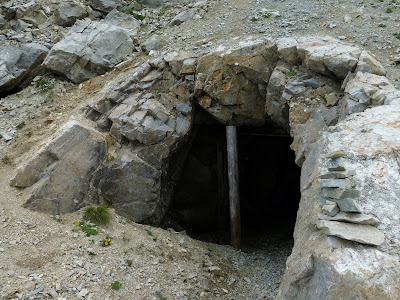The Selle Pass (Passo delle Selle, 2,528 m, 8,293 ft) divides the
Monzoni Group (west of the pass) from the Costabella Group (east of the pass)
and is therefore the main passage through a mountain barrier that divides the
San Pellegrino Valley from the Monzoni Valley.
On 25 May 1915 (the day after Italy’s entry in World War I), after
reconnaissance by Alpini units of the Val Cordevole Battalion, Bersaglieri of
the 18th Battalion (3rd Bersaglieri Regiment) occupied
the San Pellegrino Pass (1,918 m, 6,292 ft) without making contact with the
enemy. The small Austro-Hungarian forces in the area, in fact, had retreated to
the more defendable Selle Pass and the Monzoni and Costabella groups. The main
peaks of the Monzoni Group in Austro-Hungarian hands were, from east to west:
Punta delle Selle (2,593 m, 8,507 ft), Punta Alochet (2,582 m, 8,471 ft), Spiz
de Tariciogn (2,647 m, 8,634 ft) and Cima Malinverno (2,636 m, 8,638 ft).
Nevertheless, the Austro-Hungarian forces in the area were so small (a
few Standschützen and Landsturm troops, mostly middle-aged men whom had not
been called up in 1914) that, had the Italian commands ordered a resolute
attack, they would almost certainly have overcome the still weak defense (there
were no fortifications yet), overflowing through the Fassa Valley. Instead,
they ordered extreme caution and little advance, in order not to compromise the
defensive stance. This allowed German reinforcements of the Alpenkorps to come
to help the Austro-Hungarians, and gave them time to fortify the Selle Pass,
Monzoni, and Costabella.
The only significant action against the Selle Pass and Monzoni Group
took place between 17 and 18 June 1915. A platoon of an Alpini from the Val
Cordevole Battalion (7th Alpini Regiment), under cover of night and
fog, took by surprise the nine Standschützen who guarded Punta Alochet, and
captured the peak. A simultaneous surprise attack by Bersaglieri (20th
Bersaglieri Battalion, whom also participated in the attack on Punta Alochet) led to the
capture of the Selle Pass, forcing the Austro-Hungarian garrison to retreat
towards the Monzoni Valley; units of Bersaglieri went down the valley beyond
the pass and nearly reached the Torquato Taramelli mountain hut (2,046 m), down
in the Monzoni Valley. From there, had they managed to create a bridgehead and
continue the advance, they could have reached the Fassa Valley, subverting the
entire frontline of that sector; contemporary attacks against the Costabella
Group, however, failed, compromising their position.
The Bersaglieri who had captured Punta Alochet waved the Italian flag in
rejoicing, but this drew the attention of all the Austro-Hungarian artillery in
the sector, which concentrated fire on this peak, slaughtering the Italian
troops. At Selle Pass, elite Alpenkorps units came to the help of the Austro-Hungarians,
attacking the Italians with machine guns, and finally drawing them off the
pass; the men on Punta Alochet thus became isolated, and the peak was
recaptured by Landsturm troops. 281 Bersaglieri were killed, most of them at Selle Pass and near the Taramelli mountain hut, and the others had
to retreat to their starting positions.
Two lower elevation in the grasslands below the Selle Pass, Sas dal Musc
(2,230 m) and Colifon (2,370 m), had also been captured during these attacks;
Italian troops kept these positions and fortified them.
Italian attacks during the following years were mostly directed against
the Costabella Group, instead of the Monzoni and Selle Pass. In the hollow
beyond Selle Pass, Austro-Hungarian forces built a village of huts and depots
to supply their positions on Monzoni and Costabella groups.
The whole sector was abandoned in November 1917, with the general
Italian retreat from the Dolomites following the battle of Caporetto.





















































































































































No comments:
Post a Comment